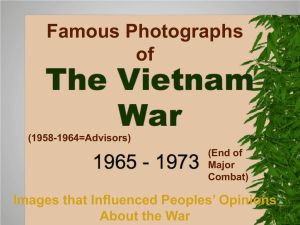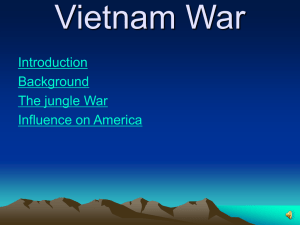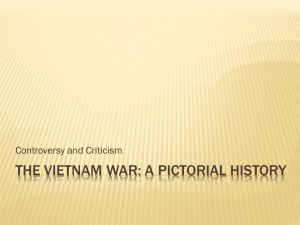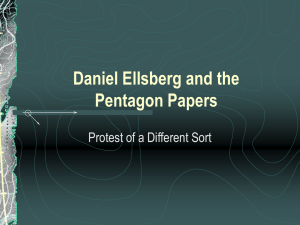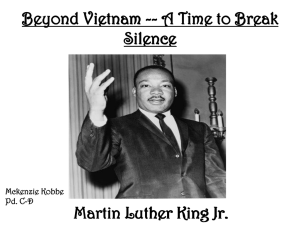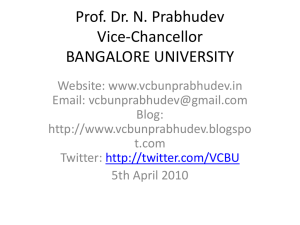History of Photography - School Of Communication
advertisement
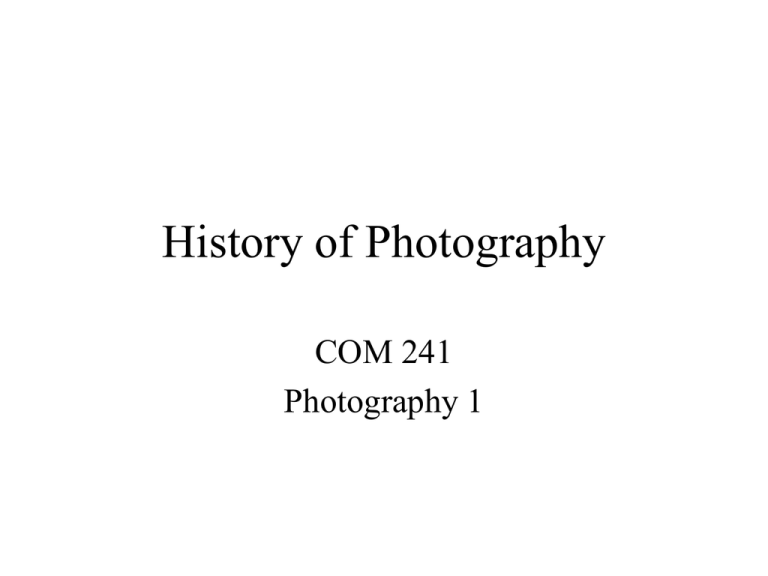
History of Photography COM 241 Photography 1 Camera Obscura • Latin for dark room • Dark room or box with small hole in one end • Inverted image could be seen on opposite wall • Technique used in 1400s – Painters, artists • Lens invented in 1500s Joseph Niepce (1765-1833) • (pronounced Nee-ps) • Created the first photograph in 1827 • Exposure time was 8 hours • Used a varnish which was put on metal and then hardened when exposed to light • Areas not exposed were dissolved using chemicals Louis Daguerre (1787-1851) • (pronounced Dagair) • Invented his photo process in 1839 – Reduced exposure time to 30 minutes • Called Daguerreotype • Drawback: Images could not be reproduced Calotype • Process invented by Fox Talbot in 1841 – Used a paper negative • Prints could be made by placing negative on top of photo paper and exposing to sunlight • Drawbacks: exposure time still pretty long – 1-2 minutes Fishwives and Fishes. calotype negative and salt print Collodion • Process invented by Frederick Scott Archer in 1851 • Used glass instead of paper for negatives – Images were much clearer, sharper • Shorter exposure times (2-3 secs.) – Photographers could shoot more than still lifes, portraits • Wet process, required portable darkroom Matthew Brady • Used collodion process to document the Civil War (1861-65) • Team of 20 photographers who took most of pictures Harvest of Death by Timothy O’Sullivan, July 1863 Photo by Mathew Brady, Union soldier by gun at US Arsenal, Washington DC, 1862. The most famous of the beardless poses of Lincoln, taken by Mathew B. Brady on Monday morning, February 27, 1860. Marcus Sparling seated on Roger Fenton's photographic van, Crimea, 1855. • Eadwaerd Muybridge (pron. mibridge) – Paved way for motion picture photography – Known for photo sequences – “Galloping Horse” - 1878 • Multiple cameras, tripped shutters Kodak Brownie (1888) • George Eastman – Introduced photography to masses – Flexible film invented 1884 – Four years later Kodak came out with box camera • Included roll of film • Sent box in for development Social Change Child Labor Laws In 1908 the National Child Labor Committee was already campaigning to put the nation’s two million young workers back in school when the group hired Lewis Hine. Hine traveled to half the states, capturing images of children working in mines, mills and on the streets. Here he photographed “breaker boys,” whose job was to separate coal from slate, in South Pittston, Pa. Hine’s pictures swayed the public, and Congress enacted laws banning child labor. The Great Depression This California farmworker, age 32, had just sold her tent and the tires off her car to buy food for her seven kids. The family was living on scavenged vegetables and wild birds. Working for the federal government, Dorothea Lange took pictures like this one to document how the Depression colluded with the Dust Bowl to ravage lives. Vietnam War A wounded marine reaches out to a comrade stricken during fighting for Hills 400 and 484. Near Dong Ha, South Vietnam, 1966. Larry Burrows / LIFE U.S. marines recover a body under fire during the battle for Hill 484. Near Dong Ha, South Vietnam, 1966. Larry Burrows / LIFE A woman mourns her husband, killed by the Vietcong during the 1968 Tet offensive. His remains were uncovered in a mass grave one year later. Huè, South Vietnam, 1969. Larry Burrows / LIFE South Vietnamese pilots, following orders from U.S. command, veered off-course on a bombing mission and accidentally hit Trang Bang, a village about 30 miles from Saigon. Moments after the explosions, AP photographer "Nick" Ut witnessed a small group of screaming children fleeing the scenes of death. A young girl, having torn off her napalmed clothing, ran naked towards Ut. He photographed the grisly moment before putting down his camera and taking the girl to the hospital. This photo taken by United States Army photographer Ronald L. Haeberle on March 16, 1968 in the aftermath of the My Lai massacre shows mostly women and children dead on a road. With North Vietnam’s Tet Offensive beginning, Nguyen Ngoc Loan, South Vietnam’s national police chief, was doing all he could to keep Viet Cong guerrillas from Saigon. Here, Loan executed a prisoner who was said to be a Viet Cong captain. AP / Eddie Adams (1968)

